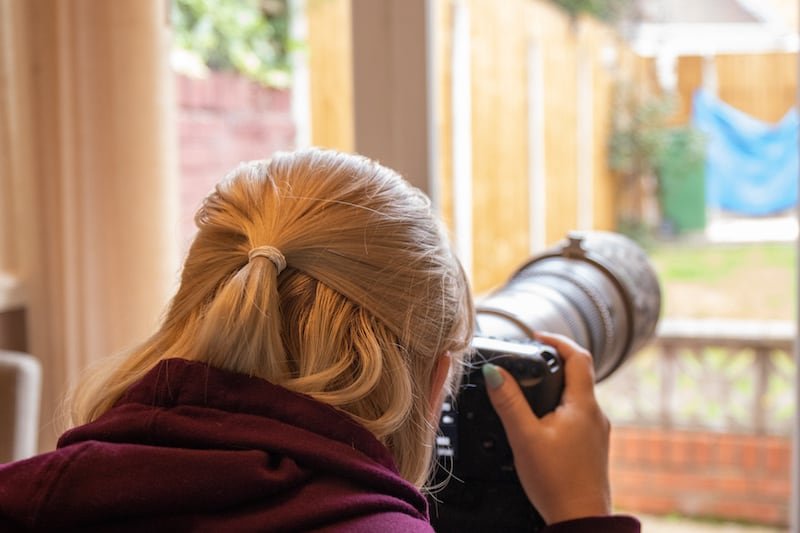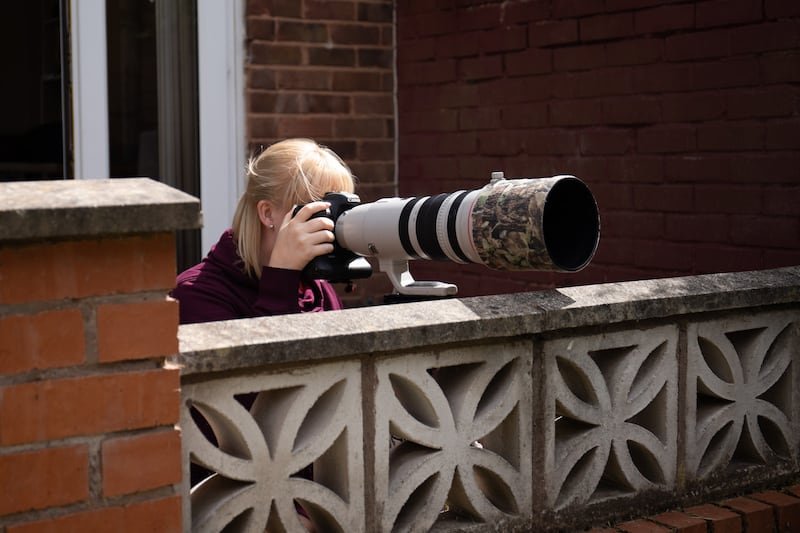How To Photograph Garden Birds
Welcome to the final part of my guest mini series with Welsh Slate Water Features regarding garden birds and in this post I’m looking at How To Photograph Garden Birds and the best ways to capture images of our feathered friends.
As a wildlife photographer I spend a lot of time in the great outdoors photographing the insects, birds and mammals that I see. But I almost spend just as much time sat in my garden photographing the birds that visit me. I thought this would be a useful time to discuss a few things you can do to help you photograph visiting birds.
Camera Equipment
Let’s talk about gear first as this is a key element, but not as important as you might think. I, personally, use Canon DSLR cameras and a range of lenses depending on what I’m doing. Whether it’s a mirrorless, DSLR, bridge or compact camera you have, it doesn’t matter. You can even use your phone if that’s what you have. An old photography saying goes “the best camera is the one you have with you”.
Certain cameras and lens types will make your life a little easier, especially when photographing smaller song birds. For instance if you have a lens with a longer focal length it means you can photograph the birds without needing to get too close to them.
This can be key to photograph songbirds, they can be very skittish and will disappear if you try to get to close them. But because they’re small you’ll need to get close enough to take a good picture. This is where telephoto lenses can really come in handy because you can maintain a good physical distance from your subject but still be “close enough” to get a nice, sharp picture.
But there are techniques you can employ to be able to get closer with less expensive camera gear and still get great pictures.

Conditioning
I use this term because you can “condition” the birds to accept you presence by being in a certain proximity to their bath or food source. It’s even possible to have birds feed from your hand if you take the time to “train” them to accept your presence. If the birds that are feeding at your feeders are used to seeing you in a certain place they will continue to feed without fear, allowing you to get closer.
A key element of this can be to make yourself appear as small as possible. Sitting or kneeling can be a huge help in this regard as it makes your shape appear smaller. Moving to a different position can create an uneasiness for the birds as you won’t be where they expect you to be, but again, with a bit of training they will come to accept you.

Photograph From Cover
I don’t mean you should be going out and building a bird photography hide in your garden, unless you really wanted to of course. But by shooting from cover I mean from behind a wall whether looking around the corner or over the top. You can shoot from a window or patio door, this will hide you from the birds to a degree and they will be entirely as comfortable as if you weren’t even there. This will give you the most amount of time to observe the birds and photographing them because they won’t be trying to get away from you.
In terms of photographing birds in your garden these are the most easy to implement. You can push it a little further and make camouflage screens to stand behind, or cover yourself with camouflage netting so conceal yourself. For majority of garden birds it’s largely not necessary as they’ll quickly adapt to your presence.

I hope this final post and the mini series in general has provided some useful insights into the world of flight and how to photograph garden birds. Remember, it’s mostly about patience and persistence. If you give the wildlife in your garden your time, you’ll be rewarded with a great show.
Please visit the Guest Blogs page to explore the four other posts in this series, as well as more interesting gardening related content from Welsh Slate Water Features.
Take care everyone,
Gareth.
Gareth Kelley Website
Gareth Kelley Facebook
Gareth Kelley Instagram
Welsh Slate Water Features would like to extend our most sincere gratitude to Gareth Kelley for providing this incredible mini series of blogs related to garden birds. We’re proud to promote his breathtaking photography and passion for UK wildlife. Please take the time to follow Gareth via social media and visit his website.

